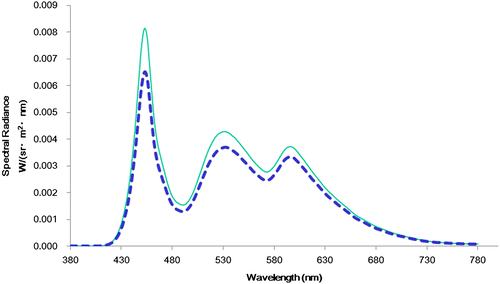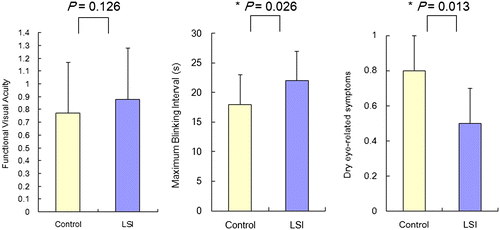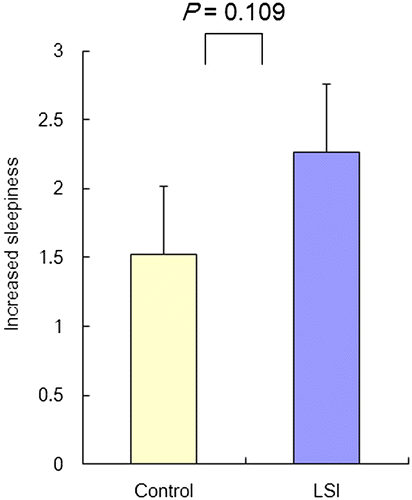Figures & data
Figure 1. The spectral component of white light emitted from the display of the IROMI® Tablet device with (dotted line) and without large-scale integration for blue-light control (solid line). Blue-light reduction rate is 20.1% (@ 434 nm).

Figure 2. Screen images from the tablet device with and without large-scale integration (LSI) for blue-light control. (a) Original screen image without LSI for blue-light control; (b) Screen image with LSI for blue-light reduction only; (c) Screen image with LSI for blue-light reduction and color control. Note the display is yellowish with blue-light reduction only whereas the image is acceptable with color control by LSI.

Figure 3. The ocular parameters of functional visual acuity (left panel), maximum blinking interval (center panel), and number of dry eye symptoms (right panel) are shown for participants while they performed tasks for two hours, from 22:00 to 24:00, on self-luminous devices with large-scale integration (LSI) for blue-light reduction and without LSI (control).


